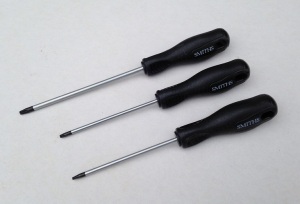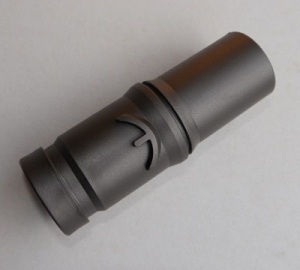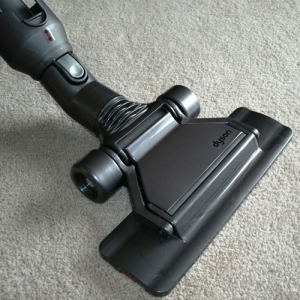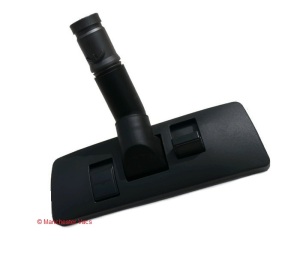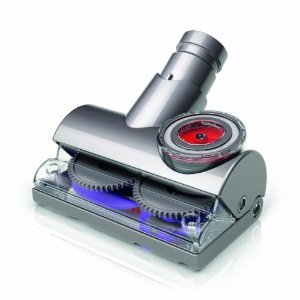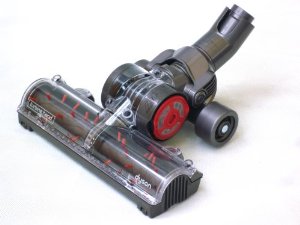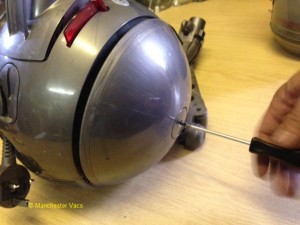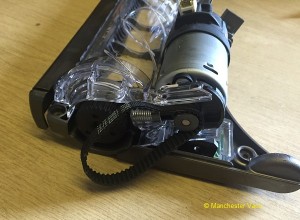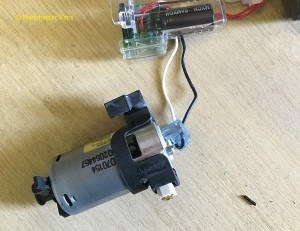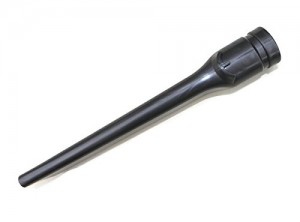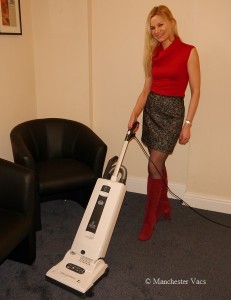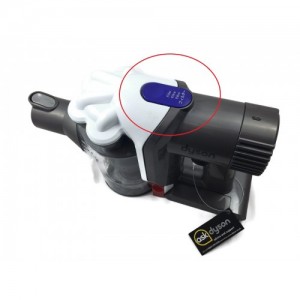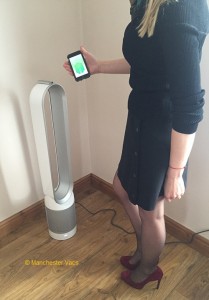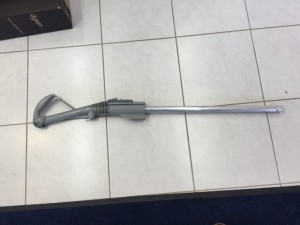A Dyson tool adaptor is nothing new you may think – but this one is!
As a savvy Dyson Medic reader, you are reading about this one before it is even available!
That is how much our finger is on the pulse in Dyson land.
Early Dysons, being DC01, DC02, DC03, DC04, DC05 (not Motorhead), DC07 and DC14 all used similar tools. They were a 32mm brush. stair and crevice tool that look like this.

As Dyson owners, we all have a set or three of those in the drawer don’t we? Are they destined for the bin as they don’t fit, now we have bought a DC41 or another newer Dyson? Not yet! Read on…..
Dyson charge about £10 each for those original tools, but you can get after-market ones from anywhere for under a fiver now.
However, Dyson cottoned on to this, so they started making tool fittings a little different for a while.
The first to change was the DC14 crevice tool, they made it curved so after-market and earlier ones wouldn’t stow away on the machine. But they still fit. The after-market addressed that and made a DC14 crevice tool.
So the DC08, DC11, DC15 and many cylinder/canister machines all had different tool fitting sockets on there. For a while, they made each model’s tool connectors a little different. We can see no other reason for this other than to stop after-market sellers selling – for example – a DC15 owner a set of the tools above. DC15’s have a totally unique set of tools with a smaller diameter fitting, and if you want to replace them from Dyson, they will cost you £10 each.
From Dyson’s perspective, they would prefer to have £30 out of you for a set of tools than you get a set of three from eBay for a fiver. Nothing wrong with that, they are in business to make money, and they are not a charity.
However, as with automotive and any other market you can think of, there is an after-market. If the after-market can bring you an item an original manufacturer charges a tenner for, for a fiver, they will. Sometimes Dyson don’t like that and court cases have happened in the past.
Starting with the DC24 baby ball, and the DC16 hand held and the DC23 cylinder, Dyson began to make all the tools with this style of tool connector.

As we can see, there is a crescent, half moon, curved detail on there that prevents the earlier tools fitting the newer machines.
Dyson retained this design of tool in upright machines from the DC24. DC25, DC27 and DC33 right up to the newer DC41 and to the DC65 and beyond.
In cylinder/canister machines, it started with the DC23, through to the DC32 right up to the newer DC39 and beyond.
In hand-held and cordless machines, the new tool design started with the DC16, and is still used in the newer DC44, DC59, DC34, DC43 and DC58 models and beyond.
But not all machines had an old style crevice tool, some only had what they called a multi-tool.

But people wanted traditional crevice, stair and brush tools. The after-market came up with this.

Which you can get from >>HERE<<, and is a traditional crevice tool with the later fitting.
However, lots of people still have lots of the older tools that they like and work well. That look like this.
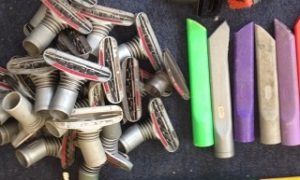
And they want to use them with their newer Dyson, be it a DC16 hand held, or a DC41 ball, or even a new funky “Big Ball” Cinetic. But they can’t. Because they don’t fit.
So an adaptor is needed, yes? And now we come to the point of the article. Why doesn’t someone make an adaptor that allows newer DC39 and DC41, etc. machines to use the old style Dyson 32mm tools?
A few months ago we asked Dyson Medic readers to suggest after-market spares that are not already made. And they did. One of several that we agreed was viable, we put forward to a manufacturer of after-market Dyson spares to see what they thought. And guess what?
Here is a clear plastic prototype (when they are made, they will be dark grey in colour) of that very adaptor!

That is an adaptor that will allow most of the newer Dysons to use all the tools from most of the older Dysons.
That part is being manufactured right now, and as soon as it is available to buy in a few weeks, we will update the topic here and tell you where to get one from. 
As usual, you read it here first.
If you like what you read on Dyson Medic, please use the buttons below to share us on Facebook, Twitter and other social media. You can also leave a comment below.




